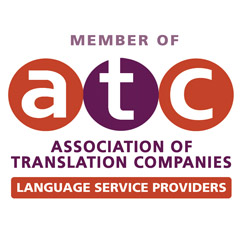Introduction
In today’s world where people from different countries connect easily, translating words accurately is super important. But it’s not just about changing words from one language to another. Translation also means understanding the culture behind the words. This article talks about why knowing cultural context is crucial for translation.
Understanding Cultural Nuances
Cultural nuances are the small differences in how people act, their traditions, and how they talk, which vary from one culture to another. These differences affect how people understand language, so they’re really important to think about when translating. For example, a word might mean one thing in one culture but something different in another.
The Role of Context in Translation
Context is super important in translation because it helps us understand the language better. If we don’t have context, translations might not make sense or could be confusing. For instance, sayings or expressions might seem strange if translated word for word, but when we understand the situation they’re used in, they start to make sense.
Challenges of Cultural Translation
One big problem in translating between cultures is the language barrier. Besides just differences in language, there are also cultural differences that can make it tricky. This can lead to misunderstandings or even hurt feelings if not handled carefully. It shows how important it is to be aware of and respectful towards different cultures.
Case Studies
There are lots of examples that show how misunderstandings in translation can cause problems because of cultural differences. For example, in China, Pepsi’s slogan “Come alive with Pepsi” got translated in a funny way. It ended up meaning something like “Pepsi brings your ancestors back to life.” Mistakes like this can really hurt a company’s image and reputation.
Strategies for Effective Cultural Translation
To deal with these problems, it’s really important to do thorough research and understand the cultural background before starting any translation work. Working together with people who speak the language natively and experts in that culture can give us important information and help us make sure our translations are right.
The Impact of Cultural Nuances on Business
In the business world, understanding cultural differences is super important, especially when it comes to marketing and branding worldwide. If a company doesn’t consider these differences, they could make big mistakes that cost them a lot and hurt their reputation. So, it’s really important for businesses to make sure they’re being culturally sensitive when translating things.
Cultural Sensitivity in Translation
It’s not just the right thing to do, but also really important for good communication to respect cultural differences. Translators need to be careful about cultural sensitivities and not force their own culture’s ideas into translations. Training that helps translators understand different cultures can make them more aware and respectful.
Tools and Technologies in Cultural Translation
Even though translation tools have gotten a lot better, they still can’t fully grasp all the small cultural differences. That’s where human translators come in. They understand cultures and contexts, so they’re really important for making sure translations are top-notch.
Educational and Training Initiatives
To meet the increasing demand for translators who understand different cultures, schools and language programs should include cultural training in their courses. This will help translators learn the skills and knowledge they need to do a better job of translating culture.
Future Trends in Cultural Translation
As technology continues to evolve, we can expect further advancements in translation tools and techniques. However, the human touch will remain indispensable, particularly in navigating complex cultural nuances. The demand for cultural experts and translators who can bridge linguistic and cultural gaps will only continue to grow.
Conclusion
In conclusion, cultural nuances play a pivotal role in translation, shaping the way we communicate and understand each other across cultural boundaries. By recognizing the importance of context and cultural sensitivity, we can enhance the quality and effectiveness of translation efforts, fostering better cross-cultural communication and understanding.
FAQs
1. How do cultural nuances affect translation?
– Cultural nuances influence the interpretation and meaning of words, requiring translators to consider context and cultural context.
2. What are some examples of cultural mistranslations?
– Examples include Pepsi’s slogan mistranslation in China and Chevrolet’s failure to recognize offensive connotations in Spanish-speaking markets.
3. Why is context important in translation?
– Context provides the framework for understanding language, helping to clarify meanings and avoid misunderstandings.
4. How can businesses avoid cultural mishaps in translation?
– Businesses can avoid cultural mishaps by conducting thorough research, collaborating with cultural experts, and prioritizing cultural sensitivity.
5. What role does technology play in cultural translation?
– While technology has advanced translation capabilities, human translators remain essential for capturing nuanced cultural meanings accurately.
Find more on www.traductoresabc.com




